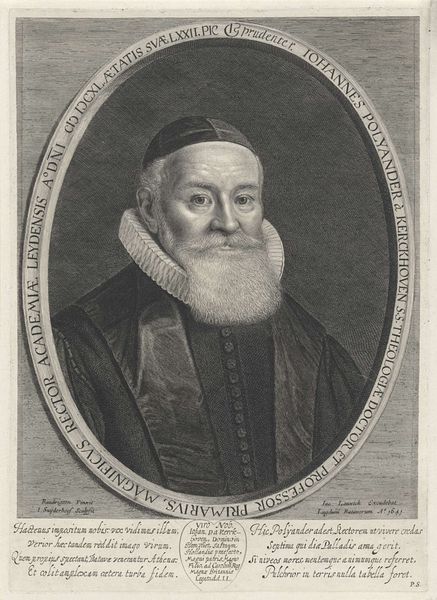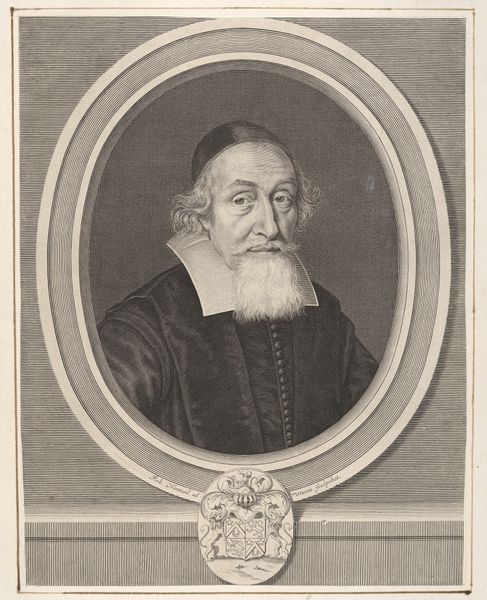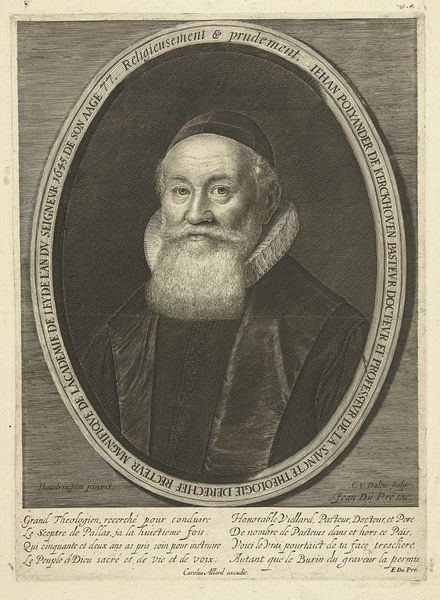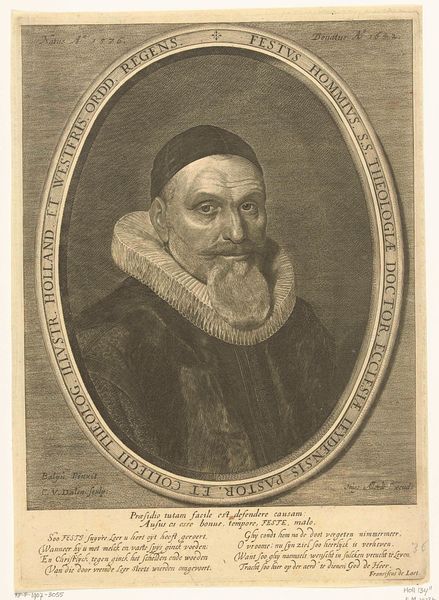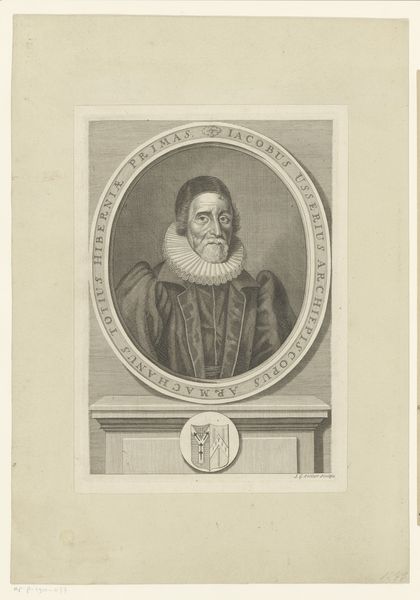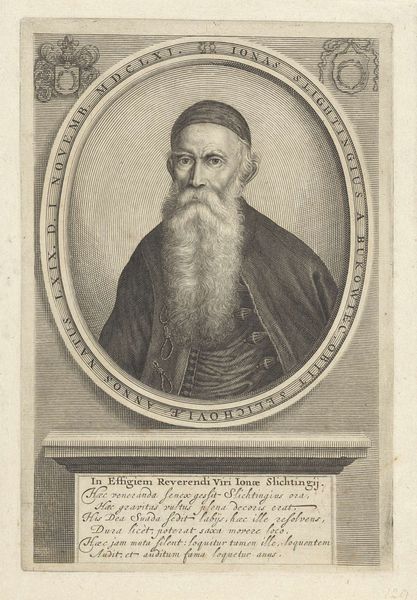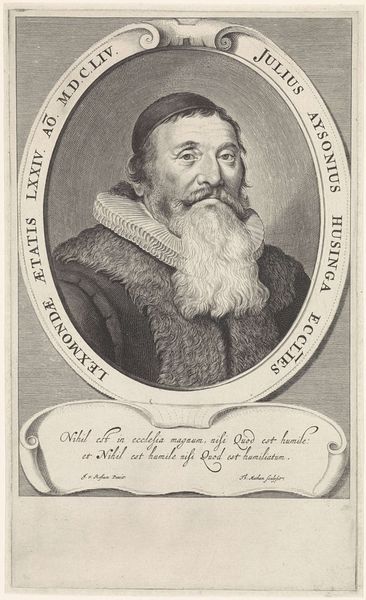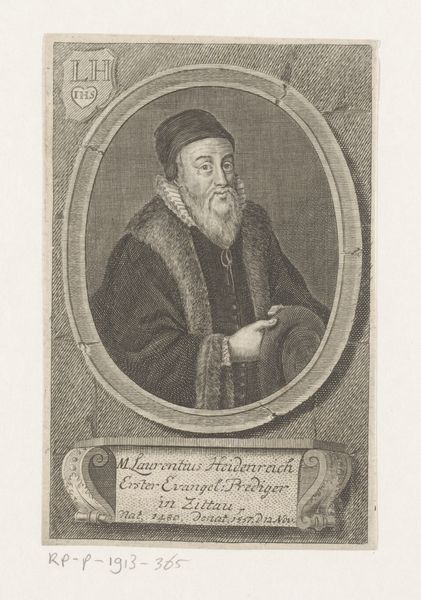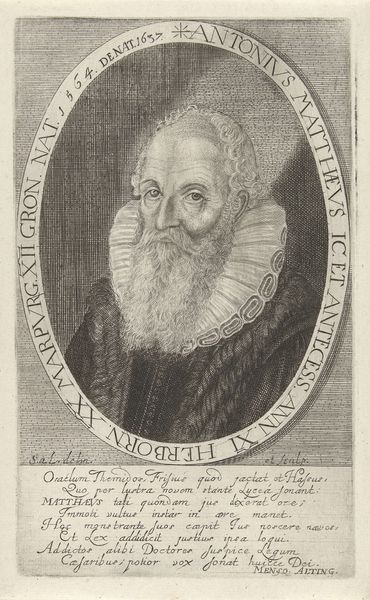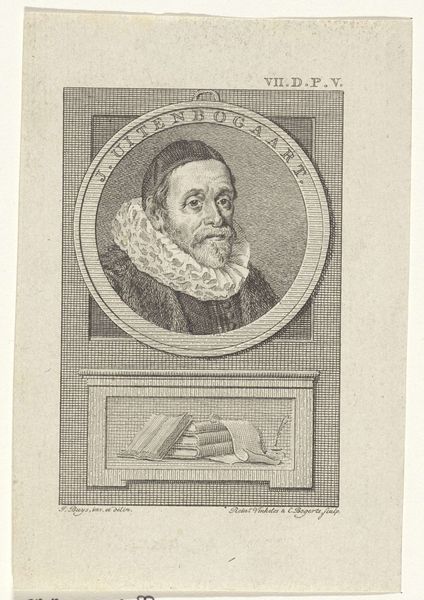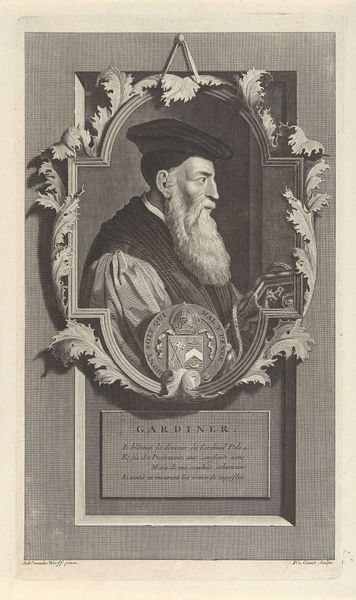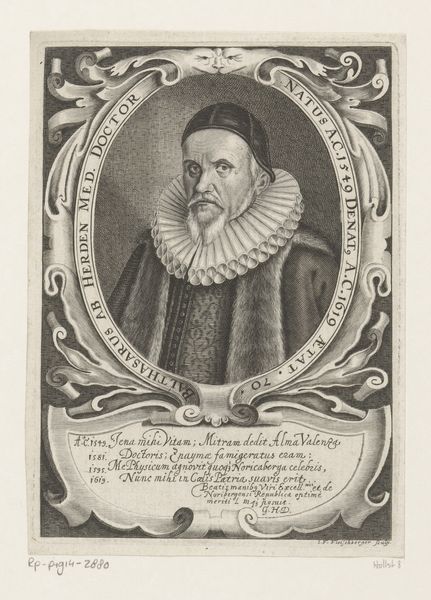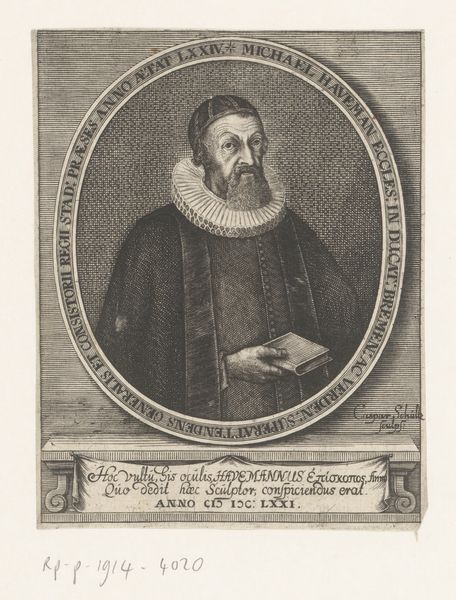
print, ink, engraving
#
portrait
#
baroque
# print
#
old engraving style
#
historical photography
#
historical fashion
#
ink
#
history-painting
#
engraving
Dimensions: height 330 mm, width 238 mm
Copyright: Rijks Museum: Open Domain
Editor: We're looking at "Portret van Jacob Sasportas," made sometime between 1693 and 1731 by Pieter van Gunst. It's an engraving held at the Rijksmuseum. It’s a rather formal portrait. What really stands out to me is all the text surrounding the central image – multiple languages, almost like framing the man with his words and legacy. What’s your take? Curator: The text *is* key. It’s not just decorative; it's an integral part of understanding the print’s function and Sasportas' role. The multiple languages – Hebrew, Spanish, possibly others – highlight the transnational networks in which Sasportas operated. He was a rabbi, scholar, and diplomat deeply embedded in a Sephardic Jewish diaspora shaped by expulsion and resettlement. Think about the role of Amsterdam at this time as a center for intellectual life and religious tolerance, relative to other places in Europe. Does that help you understand what I mean by the politics of imagery? Editor: So, the image isn't just *of* him, but also a statement about his world, the social acceptance of his multilingualism? And, the print format itself, would it allow easier dissemination to more communities than say a painting? Curator: Exactly. Prints were reproducible and could circulate widely. And consider what a printed portrait like this did for Sasportas’ image and authority. It performs and reinforces ideas about the role of Jewish intellectualism. Also, notice the coat-of-arms below the portrait. What could this say about social and institutional histories? Editor: Ah, yes, is it something personal to him? His family’s story perhaps? I am thinking now about this work in relation to other portraits of religious leaders at the time and whether they, too, contain the visual markers you mentioned. It shows that cultural objects are also defined through their social roles and place within these. Curator: Precisely! And by examining how images are reproduced and circulated, we can gain insights into social hierarchies and the broader public sphere.
Comments
No comments
Be the first to comment and join the conversation on the ultimate creative platform.
